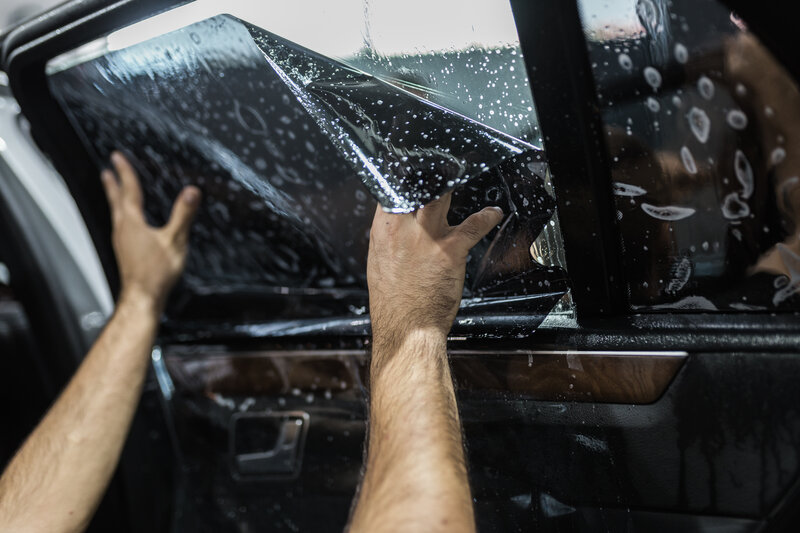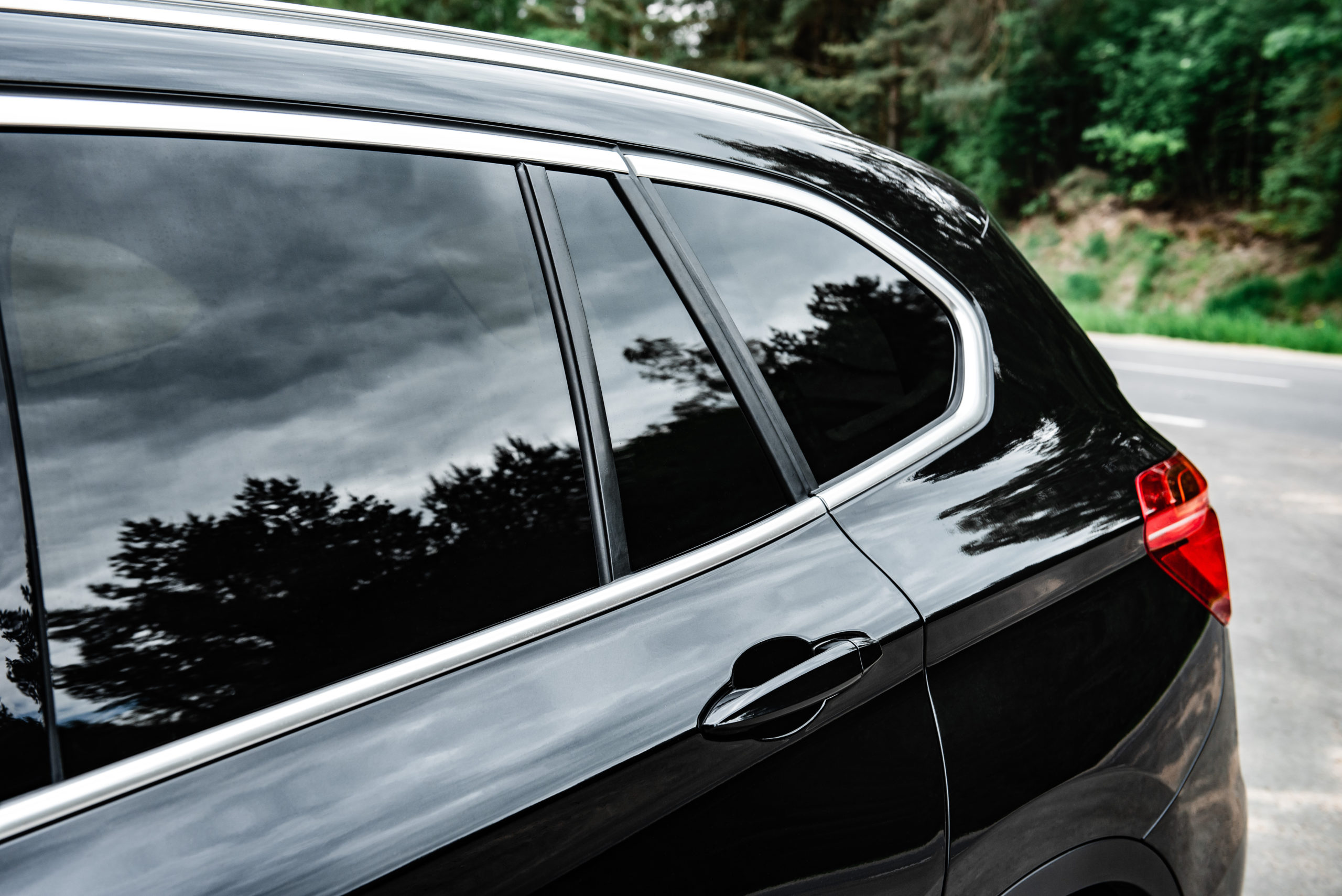Discovering the Different Kinds Of Window Color for Cars and Their Advantages

Colored Window Tint
Dyed home window color is a preferred option amongst automobile owners seeking to enhance personal privacy and minimize glare while maintaining a stylish look. This sort of tint is created by incorporating color right into the sticky layer, which is then related to the home windows of the lorry. The key charm of dyed home window color depends on its ability to give a cosmetically pleasing look without sacrificing capability.
One of the most substantial benefits of dyed home window tint is its capacity to obstruct hazardous UV rays, assisting to shield both travelers and the automobile's inside from sunlight damage. Furthermore, this tint properly minimizes glare, adding to a much more comfortable driving experience, especially during intense daytime conditions. The growing of window color also includes a layer of privacy, making it extra tough for outsiders to see inside the car.
Nevertheless, it is important to note that while colored home window tint supplies various benefits, it may not give as much heat being rejected as other kinds of colors. Its longevity can be impacted by direct exposure to prolonged sunlight, possibly leading to fading over time. Overall, dyed window color remains a favored choice for those focusing on aesthetic appeals and standard sunlight protection.
Metalized Window Color
Metalized window tint represents an advanced choice for auto proprietors looking to enhance both performance and visual appeals. This type of tint incorporates tiny metallic particles that reflect sunlight, offering a variety of advantages that interest lots of vehicle proprietors. One of the primary advantages of metalized window tint is its exceptional warm being rejected abilities, which can dramatically minimize the indoor temperature level of an automobile. This not only improves convenience for travelers yet also reduces the load on the automobile's air conditioning system, possibly enhancing fuel performance.
In addition, metalized colors offer raised toughness contrasted to colored movies, making them immune to fading and scraping. This long life ensures that the color preserves its performance and appearance with time, providing long-term worth.
Furthermore, metalized home window tint can enhance personal privacy and protection by making it more hard for outsiders to see inside the car. The reflective high quality of the tint can also hinder possible theft, as prized possessions are much less visible (window tinting). While it may hinder some electronic signals, such as GPS or mobile phone reception, the general benefits make metalized home window color a compelling option for numerous automobile owners
Ceramic Home Window Tint
Providing advanced innovation and unparalleled efficiency, ceramic window tint has become a leading selection for discerning auto proprietors. This cutting-edge film is made up of advanced ceramic fragments that give significant warmth being rejected while maintaining clarity and visibility. Unlike conventional colors, ceramic window color does not depend on steel or dye, which view website can interfere with digital signals from devices such as GPS and mobile phone.
Among the standout benefits of ceramic home window color is its phenomenal UV defense. It obstructs up to 99% of unsafe ultraviolet rays, therefore shielding both the car's inside and its owners from sunlight damage. Furthermore, this sort of tint enhances privacy without jeopardizing presence, making it a practical option for everyday drivers and luxury cars alike.
Ceramic window tint additionally boasts longevity; it is resistant to fading and damaging, ensuring long-lasting performance. Moreover, its non-reflective nature means it does not create glare, adding to much safer motoring conditions. For those looking for a costs tint option that incorporates aesthetic appeals with performance, ceramic home window color sticks out as a superior choice, delivering enhanced convenience and security when driving
Carbon Window Tint
When it pertains to home window tinting alternatives, carbon window color has actually obtained popularity for its blend of performance and affordability. This kind of tint is made up of carbon particles, which offer an unique matte surface that enhances the visual charm of vehicles. Among the main advantages of carbon home window color is its capability to block a considerable quantity of hazardous UV rays, shielding both the lorry's interior and its passengers like it from skin damage and fading.
Furthermore, carbon home window color provides superb warmth denial properties, minimizing the demand for too much air conditioning and boosting fuel effectiveness. Unlike dyed colors, carbon colors do not fade in time, keeping their performance and look for several years. This durability makes them a functional option for auto owners seeking long-lasting value.
Additionally, carbon home window color is non-metalized, which indicates it does not conflict with digital signals, making it appropriate for vehicles furnished with general practitioner, Bluetooth, and other wireless innovations. The balance of expense, performance, and visual charm has developed carbon window color as a recommended selection for numerous automobile proprietors. Inevitably, it acts as a reputable remedy for those aiming to enhance comfort while ensuring style.
Factory Tint
Factory tint, additionally referred to as OEM color, describes the tinting that is used to lorry home windows throughout the production process. This kind of tint is usually integrated into the glass itself, providing an uniform look and regular degrees of shielding across all windows. The primary purpose of manufacturing facility color is to lower glow and improve passenger comfort while providing a level of UV security.

While manufacturing facility color uses fundamental benefits, it may not offer the same level of warmth denial or personal privacy as higher-grade aftermarket colors. Vehicle owners looking for improved performance might take into consideration extra tinting options, while still valuing the aesthetic appeal and capability sites manufacturing facility tint gives.
Verdict

Nonetheless, it is vital to note that while dyed home window tint supplies various benefits, it may not supply as much heat being rejected as other types of colors. For those seeking a costs color service that incorporates visual appeals with capability, ceramic window tint stands out as a premium option, supplying enhanced comfort and security on the roadway.
When it comes to window tinting choices, carbon window tint has obtained popularity for its blend of efficiency and price.Factory tint, likewise recognized as OEM tint, refers to the tinting that is applied to automobile home windows during the manufacturing process. The precise degree of color can vary depending on the car maker and version, with some vehicles featuring a lot more significant color on back windows than on front windows.